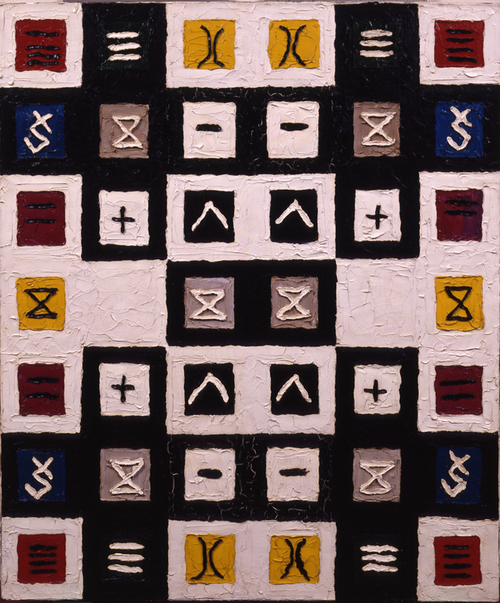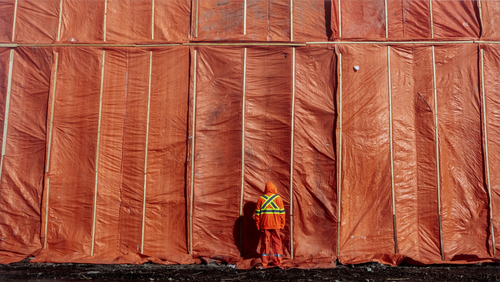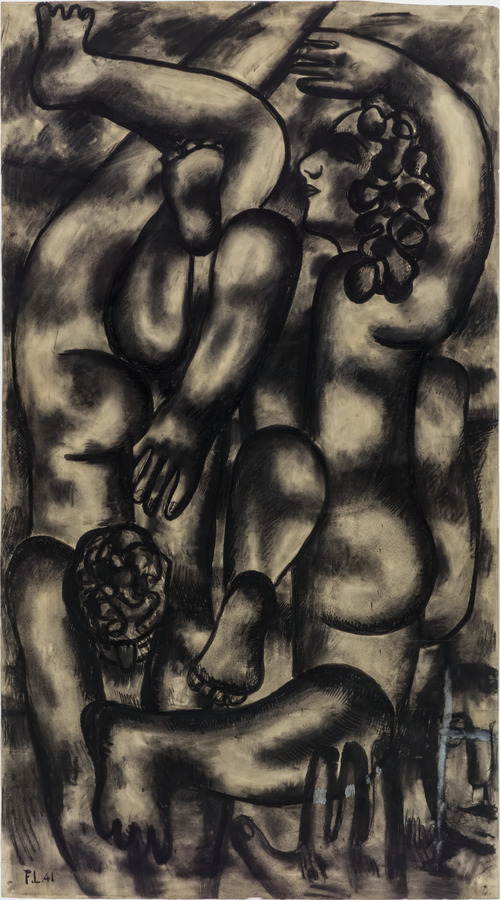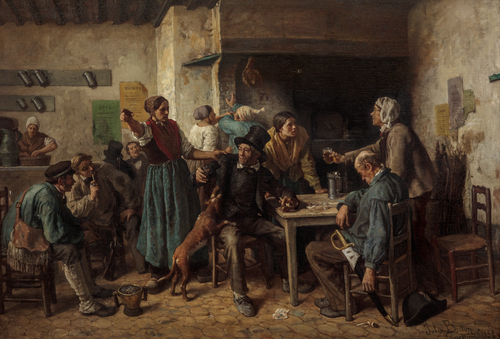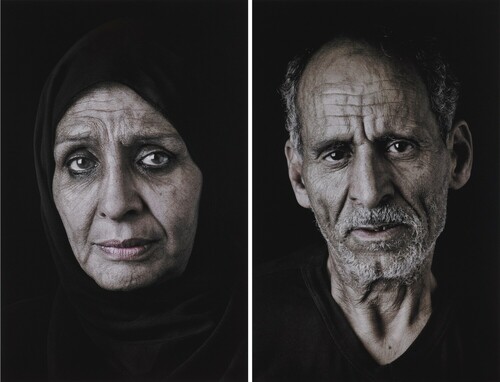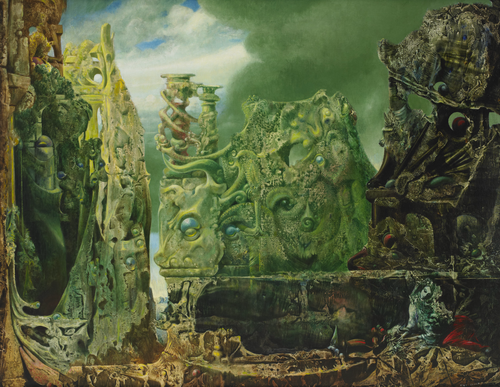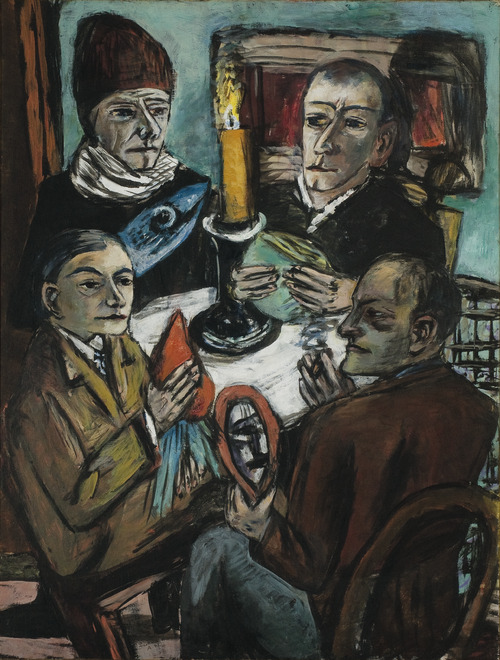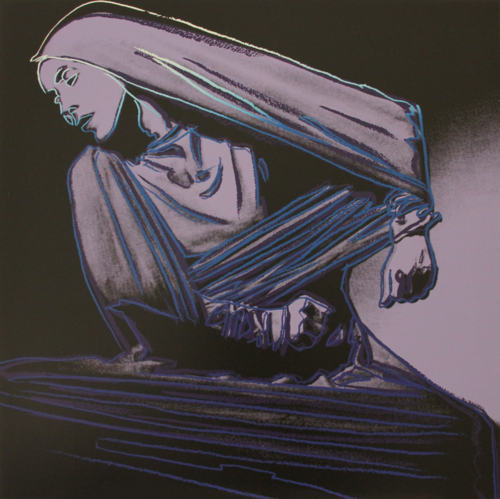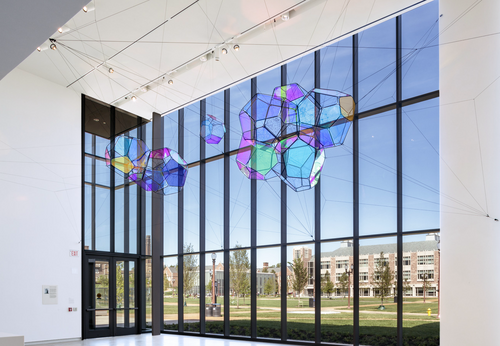Art and Activism
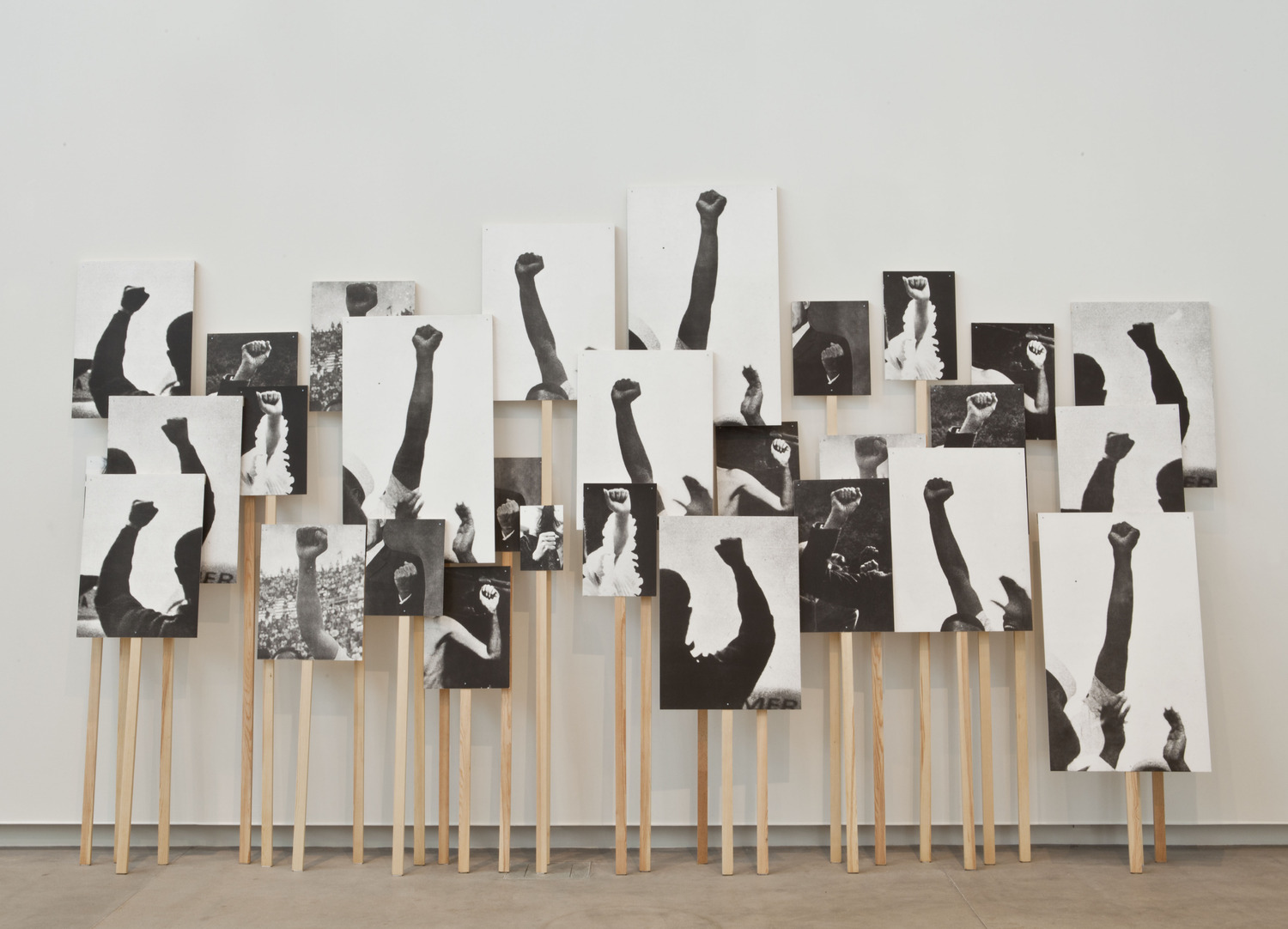
Introduction
Whether reading a book, watching a movie, or listening to a piece of music, you may have had the experience of feeling moved by a work of art. In addition to affecting how we feel, art may also inspire us to act—to make change in the world.
We will first learn about the role of art in protest by taking a close look at a work of art by the contemporary artist Annette Lemieux in the collection of the Mildred Lane Kemper Art Museum. Then we will explore the power of visual symbols to convey messages and inspire action, focusing on the history of the raised fist as a global symbol of solidarity and strength.
Art & Activism
Take a minute to look closely at the artwork below. Let your eyes wander and be drawn to details that stand out to you.
What do you notice?
What is one word or phrase that captures your observations?
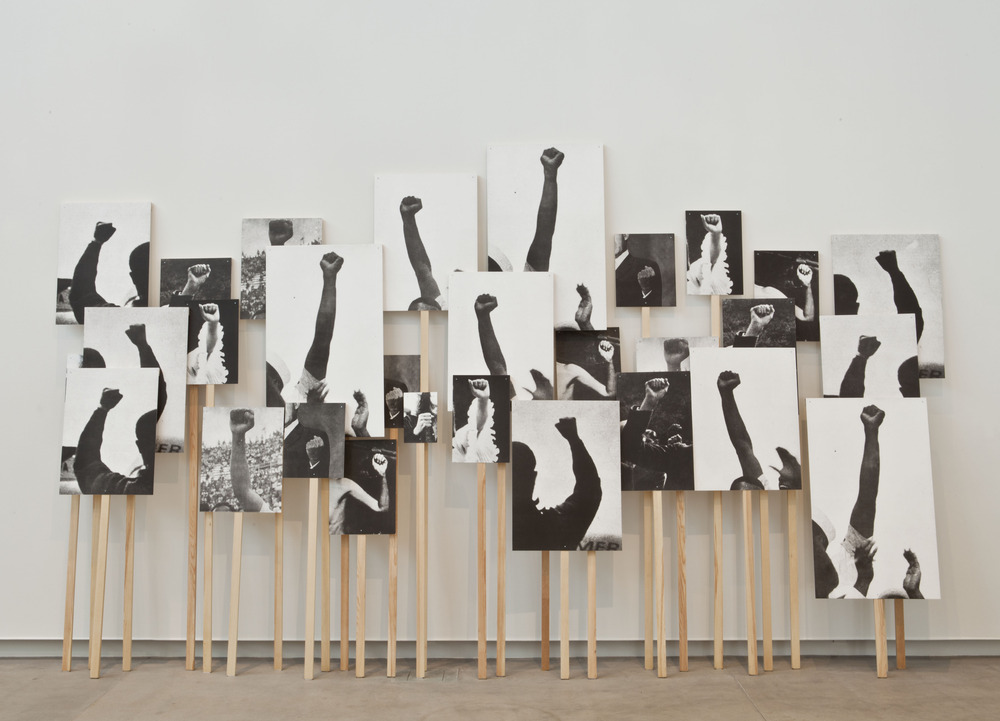
Resembling a grouping of protest signs leaning against a wall, the artist Annette Lemieux’s 1995 work titled Left Right Left Right is made up of thirty printed photographs attached to wooden sticks. Each print shows a person raising their fist in the air, yet the images are cropped so that we cannot see the faces and identities of the people depicted.
The artist found these pictures in newspapers and magazines dating from the 1930s to the 1970s. While the images all show people raising their fists, they are taken from different contexts.
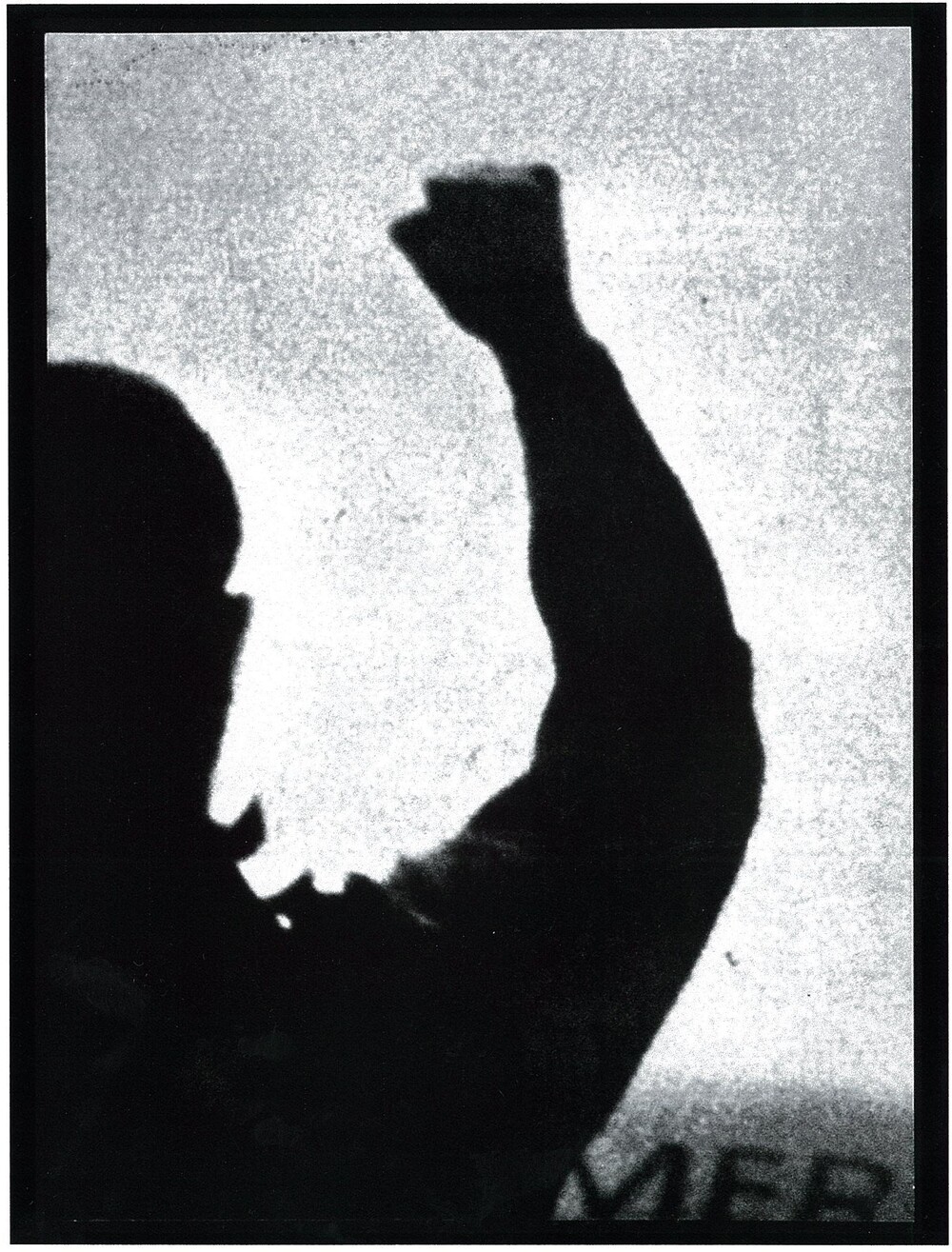
Some of the raised fists belong to famous political and cultural figures, including the civil rights activist Martin Luther King Jr., former president Richard Nixon, and the actor Jane Fonda, while others belong to anonymous people, including a preacher and a concertgoer at Woodstock. People often carry signs and raise their fists in the air while demonstrating. The artist emphasizes this connection between the raised fist and the act of protest by formatting the prints like protest signs. The gathering together of thirty of these signs also creates the visual impression of people joining with each other to take a stand as a group, rather than as individuals. If you look closely you will see that some of the images repeat. How does this repetition affect the meaning of the artwork?
What sounds does this artwork bring to mind?
Why do you think the artist chose to use photographs from different time periods and of both famous people and ordinary people?
What does the title of this artwork, Left Right Left Right, make you think about?
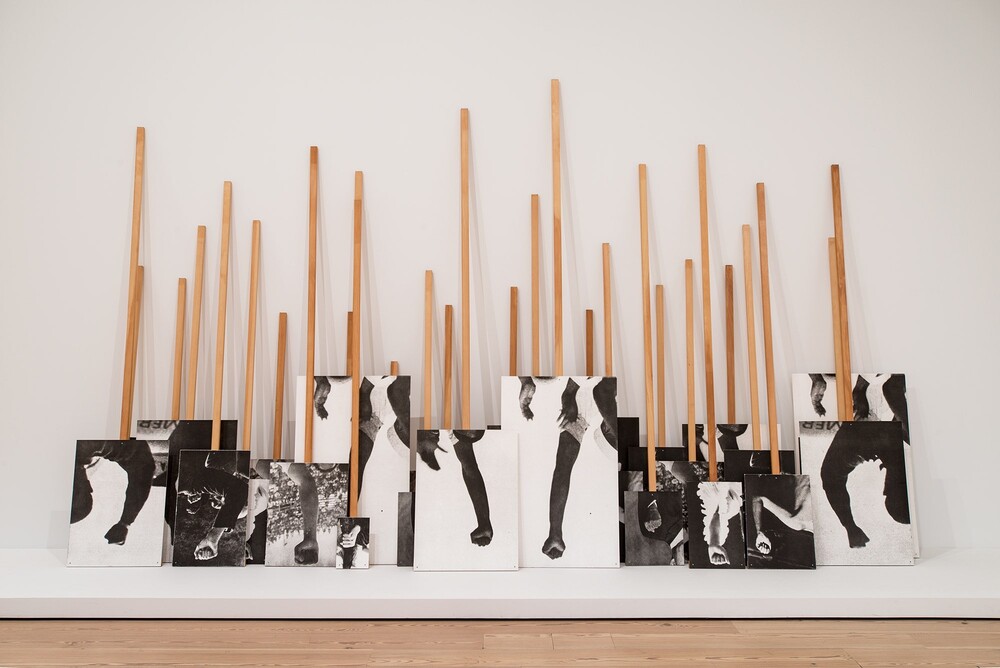
Following the election of Donald Trump as president of the United States in November of 2016, Lemieux requested that Left Right Left Right, then on view at the Whitney Museum of American Art in New York, be installed upside down. The artist said that this gesture was meant to express the power of protest, the agency of individuals, and her feeling that the "world has turned upside down."
Click on this video to watch the display of the artwork change.
How does the artist’s decision to display the artwork upside down affect how you interpret its message?
Symbolism of the Raised Fist
A symbol is a mark, word, or image that represents an idea. The act of raising one's fist—and the visual image of the fist—is a globally recognized symbol for unity, strength, and resistance to oppression.
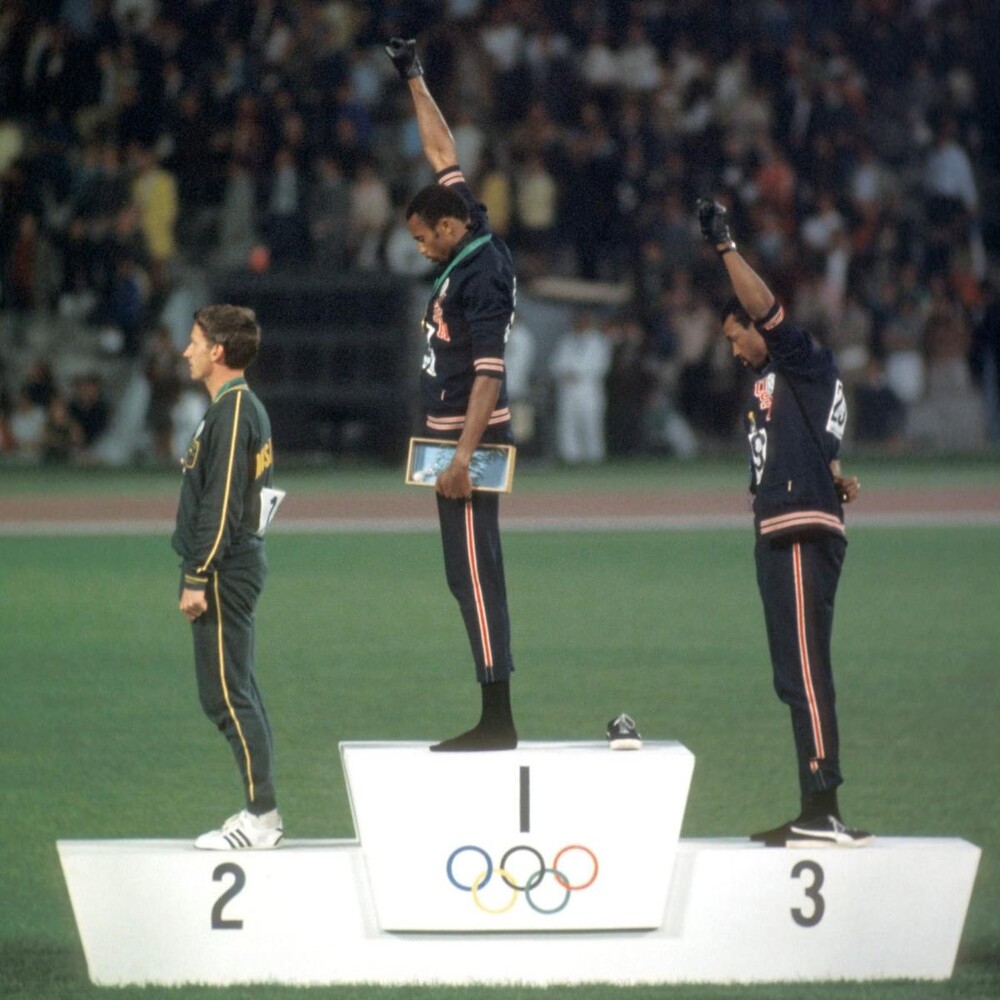
The raised fist has a long history and has been used around the world to express solidarity in different social movements, including the French Revolution of 1848, the unionization of industrial workers in the United States in the early twentieth century, and Europe's antifascist movements during the Spanish Civil War and World War II. The raised fist was an important symbol in the struggle for civil rights in the 1950s and 1960s and was used by the Black Panther Party and other groups and individuals to express Black Power.
At the 1968 Olympics in Mexico City, US sprinters Tommie Smith and John Carlos drew international attention for raising their fists during the playing of the US national anthem.
Can you think of more recent examples of athletes using their platforms to raise awareness of racial injustice?
Black Lives Matter
The raised fist is often used by protesters to show support for the Black Lives Matter (BLM) movement, which emerged in 2013 in response to police brutality against Black Americans. Use of the raised fist by BLM activists continues the symbol's legacy in the global fight against oppression. The photographs shown below were taken at antiracist protests in Washington, DC, and Charlotte, North Carolina, following the murder of George Floyd by a police officer in Minneapolis, Minnesota, in 2020.
What statements do the raised fists in these images make?
How might they be similar to or different from the statements made by the raised fists in the artwork by Lemieux?
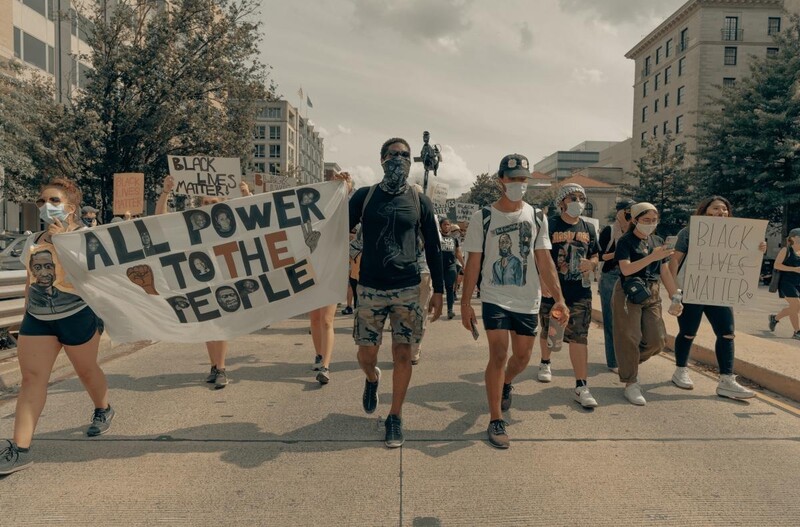
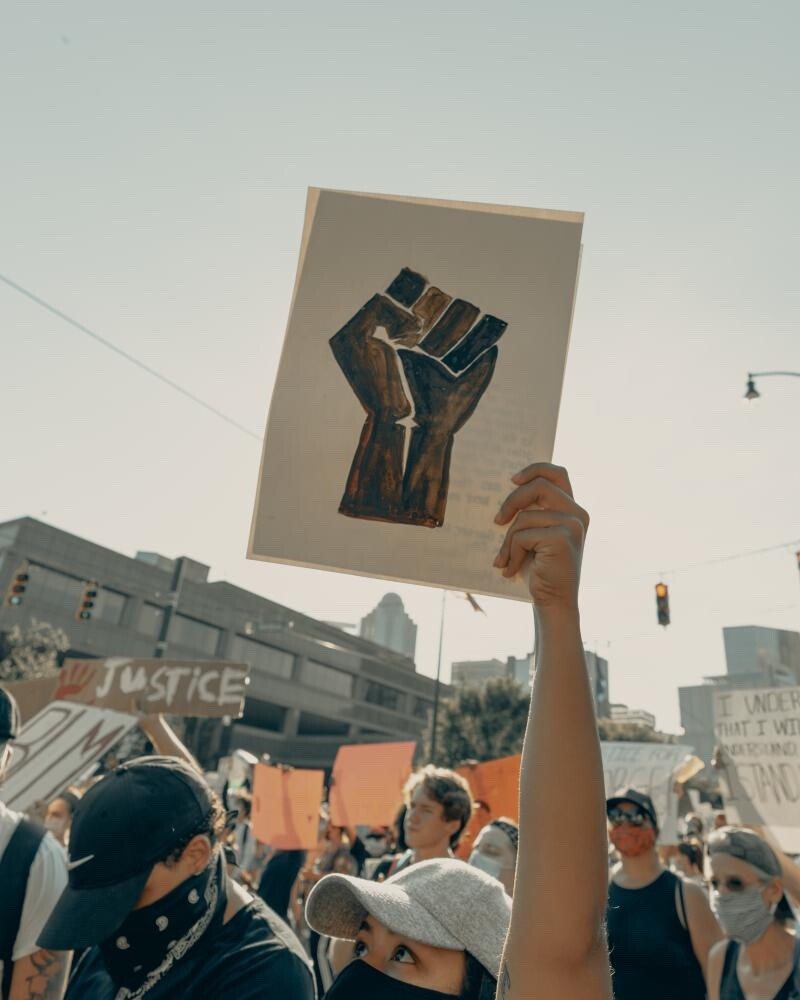

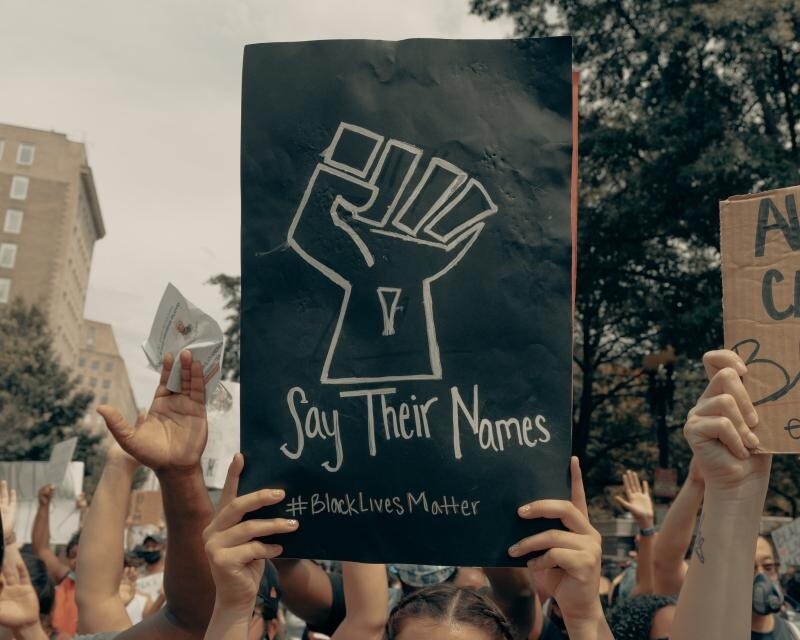
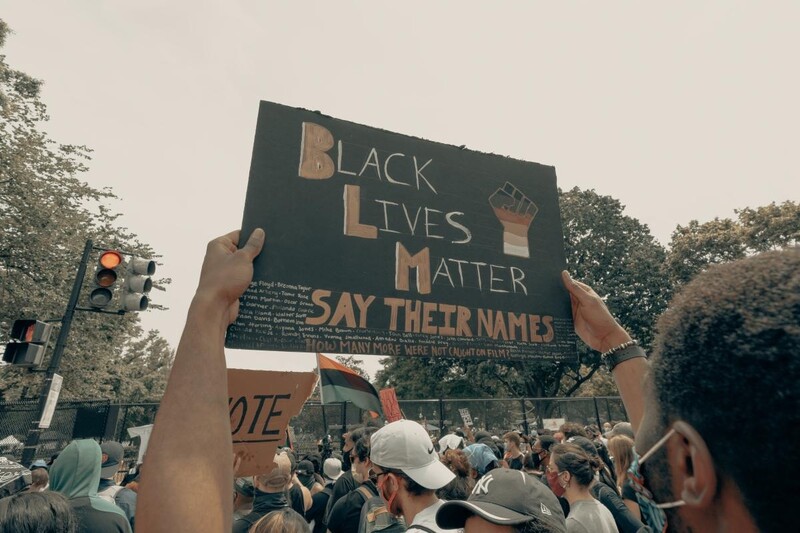
Deaf Power
There are many ways of visually representing the raised fist to make different statements. For example, sometimes the image of the fist is combined with rainbow colors to express both the messages of Black Lives Matter and LGBTQ+ Pride.
In 2020 the artist and activist Christine Sun Kim and the designer Ravi Vasavan, both members of the Deaf community, collaborated to popularize a symbol for Deaf Power. According to the artists, "Deaf Power promotes the history, languages, and values of Deaf communities all over the world. As both a sign and symbol, it spreads our cultural pride."
The symbol, shown below, is based on the written form of Deaf Power, which is signed with an open palm over an ear and with another hand forming a closed fist in the air.
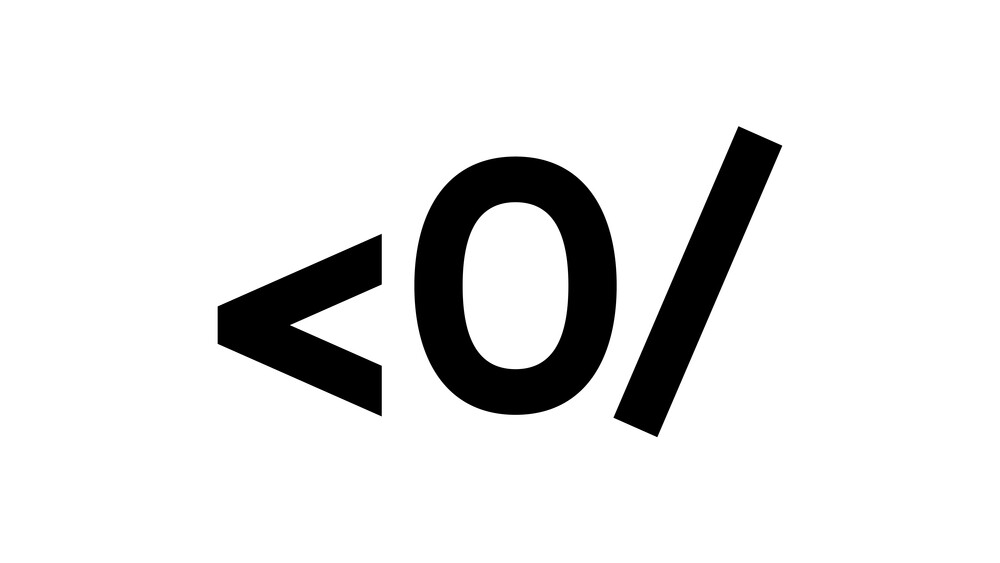
You can learn more about Christine Sun Kim and view the online exhibition for her mural at the Kemper Art Museum by clicking here.
Reflect
What ideas are communicated through the symbol of the raised fist?
What other symbols have you seen used in protest movements?
Has art ever inspired you to raise your voice or to take a stand?
Why is it important to stand up and use your voice against injustice?
Notes
Dunne, Carey. "In response to Trump's election, artist asked the Whitney Museum to turn her work upside-down." Hyperallergic, November 17, 2016. https://hyperallergic.com/338783/in-response-to-trumps-election-artist-asked-the-whitney-museum-to-turn-her-work-upside-down/ .
Helligar, Jeremy. "The history behind the clenched fist––and how it became the symbol for Black Power." Reader's Digest, July 27, 2020. https://www.rd.com/article/history-behind-the-clenched-first-and-the-symbol-for-black-power/ .
Kim, Christine Sun and Ravi Vasavan. Deaf Power <0/. http://www.deafpower.me/ . Accessed March 17, 2021.
Kushner, Marilyn. "Annette Lemieux." Island Press.
Stout, James. "The history of the raised fist, a global symbol of fighting oppression." National Geographic, July 31, 2020. https://www.nationalgeographic.com/history/article/history-of-raised-fist-global-symbol-fighting-oppression . Accessed March 17, 2021.
Whitney Museum of American Art. "Annette Lemieux, Left Right Left Right, 1995." https://whitney.org/collection/works/13686 .
We are committed to encounters with art that inspire creative engagement, social and intellectual inquiry, and meaningful connections across disciplines, cultures, and histories. Do you have ideas or suggestions for other learning resources? Is there an artist or topic that you would like to learn more about? We would love to hear your feedback. Please direct comments or questions to Meredith Lehman, head of museum education, at lehman.meredith@wustl.edu.

